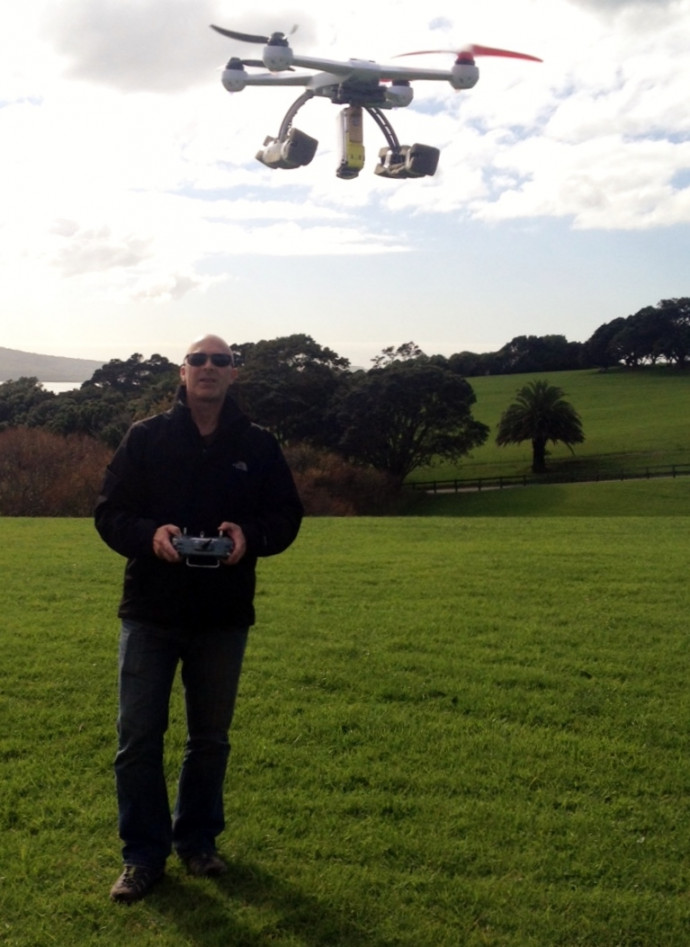Te Huruhi Primary School - Phil Wainwright

2015 | UAV mapping of landscape ecology and marine mammals
School: Te Huruhi Primary School
Host: AUT University, Department of Applied Sciences
Region: Auckland
Phil is a Deputy Principal who has been teaching for 20 years. He is currently teaching at TeHuruhi Primary School on Waiheke Island.
Phil has been hosted by Dr Barbara Bollard-Breen at Auckland University of Technology and has participated in the general research and activities conducted by the School of Applied Sciences. This included opportunities to work alongside students and faculty staff, attending post graduate courses, participating in the field and in labs researching a variety of scientific disciplines.
For the majority of his time at AUT Phil, has flown UAVs (Unmanned Aerial Vehicles) in a range of contexts to collect data for various ecological research. He spent time at Whatipu, West of Auckland, flying transects over the wetland area to collate aerial imagery for analysis. The data was then used to map the area and plan for invasive weed control.
He also worked with Barbara, her colleagues and students to map an area in TeWhau on Waiheke Island for invasive weed species using UAVs and a hand held spectrometer. He later revisited the area to fly more transects to monitor the effects of the management control programme. Together with his host, Phil also supported the mapping of an island to the west of TeWhau, using the data to create a 3D computerised model. Knowledge of this could then be transferred to other mapping projects. Phil learned how to input data and use specific software to analyse the results
Following students and their work has enabled Phil to observe the process that some PhD research projects take; flying extended hours to get specific licences to fly UAVs in restricted areas. This was also supported by reading scientific journals to enable better conversations. He also added to his own hours for flying UAVs. He has discussed readings as well as the student’s journey as he has progressed.
Flying UAVs is strictly weather dependent, so recognising the impact that nature has on research projects has been interesting to watch and one where, scientists have to adapt and be creative. Making the most of opportunities, such as going on field trips with other agencies to see how they use UAVs in their field work has given Phil a broader picture of the Nature of Science.
In addition to this Phil spent time with other scientists, for example, sorting and classifying insects collected in the field using microscopes with an aim to better understand the complexities of food webs on the Hauraki Islands’ ecosystems.
Phil thoroughly enjoyed his time at Auckland University of Technology and appreciated the time invested so he could experience the scientific world. He especially acknowledges Dr Barbara Bollard-Breen for her warmth and welcoming manner, but especially in providing Phil with a very positive learning opportunity, for giving up her time and sharing her expertise.
